Effects of tillage and time of sowing on bread wheat, chickpea, barley and lentil grown in rotation in rainfed systems in Syria

Authors:
Cropping systems in the drylands of west Asia are characterized by grazing, burning or harvesting of stub-bles, multiple cultivations and late sowing, which can limit yields and lead to soil erosion and degradation.There is a lack of information on more conservation-based technologies developed in other countries toaddress some of these problems, particularly manipulations of tillage and time of sowing. This long-termfield experiment was conducted under rainfed conditions at ICARDA near Aleppo in northern Syria toinvestigate the effects of conventional tillage (CT) and zero tillage (ZT) in combination with early and latetimes of sowing on the performance (production and profitability) of bread wheat, chickpea, barley andlentil grown in rotation over six years (2006–07 to 2011–12). As expected, the amount and pattern ofrainfall was a major driver of crop performance, varying from 222 to 453 mm among the growing seasons.The grain yield of crops was often similar under ZT and CT (≈70% of year–crop–time of sowing combi-nations) and with early and late sowing (≈80% of year–tillage–crop combinations), but there were alsomany instances when ZT yielded significantly better than CT (≈25%) and early sowing yielded better thanlate sowing (≈13%). Importantly, over the four years from 2008–09 to 2011–12, the improved crop man-agement system of ZT and early sowing gave higher grain yields than the conventional farmer system ofCT sown late in two (13%) of the 16 year × crop combinations, similar yields in 13 (81%) combinations andlower yields for ZT early in one (6%) combination. During this time, the average grain yield increases withZT and early sowing when compared to CT and late sowing were a significant 332 kg ha−1(18%) for wheat,127 kg ha−1(20%) for chickpea and 135 kg ha−1(15%) for lentil, and a non-significant 295 kg ha−1(12%)for barley. Corresponding increases in gross margins ($US) were 162, 147, 89 and 176 $ ha−1for wheat,chickpea, barley and lentil, respectively. In chickpea, the most profitable treatment was ZT sown late,producing an extra 281 kg ha−1and 271 $ ha−1compared to CT sown late. Early sowing improved cropestablishment with increased plant densities of 30%, 48% and 29% for wheat, barley and lentil respectively,while ZT increased densities by 19%, 22% and 12% for chickpea, barley and lentil, respectively, when sownearly. Other yield components reflected the grain yield responses. The increased grain yields achievedin this study, in combination with lower costs and greater profits, suggest ZT plus early sowing shouldbe evaluated and promoted more widely as an attractive cropping technology for farmers in the MiddleEast.
